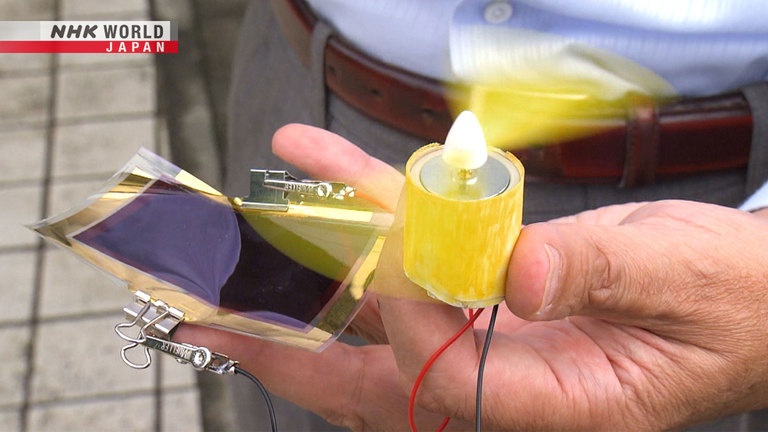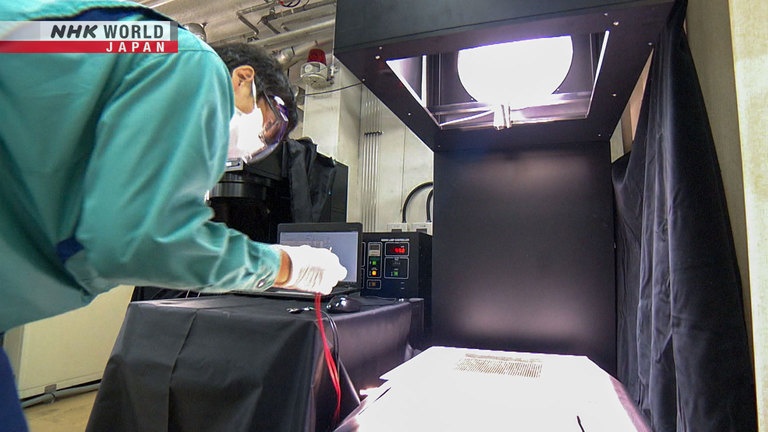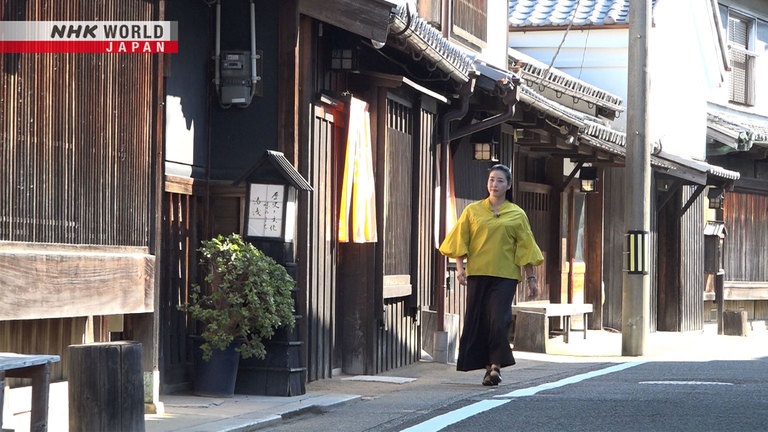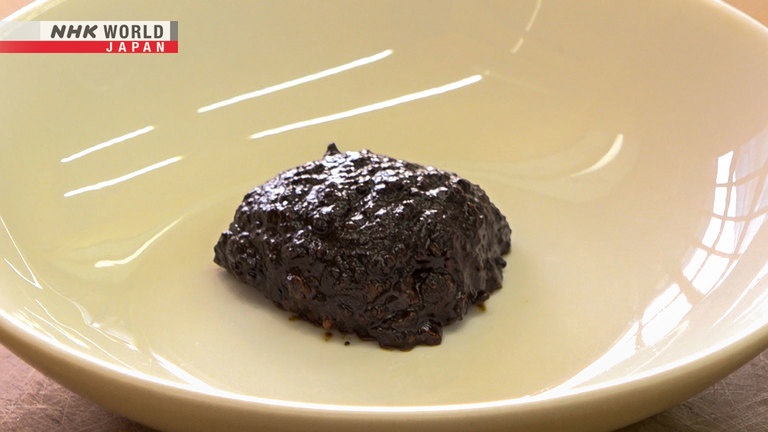Next Generation Solar Cells
Solar power generation is attracting attention as a way to solve energy problems. However, conventional silicon-based solar cells have one particular weakness - their power generation efficiency depends on the weather. This is why the world is now focusing on the development of perovskite solar cells as "next-generation solar cells." Perovskite solar cells can not only generate electricity on cloudy or rainy days, but even under weak indoor light as well, all while being lightweight and easy to make! Now competition to develop these cells for practical use is intensifying around the globe. In this episode, we examine how the innovative technology was created by Japanese researchers, and the incredible potential perovskite solar cells hold for the future.




Transcript
Humanity is facing an energy problem.
With renewable energy sources like wind and geothermal becoming more widespread,
the world is also looking to harness the power of the sun.
The sun's energy shines down onto the earth.
Scientists estimate that if all this solar energy could be converted into electricity,
it would be enough to power the entire world.
Solar cells, which generate electricity from sunlight,
could help us progress towards a decarbonized society.
However, current solar cells have one particular weakness.
They depend on the weather.
When it's cloudy or rainy, the efficiency of power generation decreases.
In an effort to overcome this problem,
a global race to develop the next generation of solar cells has begun.
Perovskite solar cells are a new type with tremendous potential.
They can generate electricity even with weak indoor light.
They're also light, bendable, and easy to make.
Companies all over the world are joining the race to develop them for practical use.
The entire planet as a power station
is not just a dream.
These cells have the potential
to change the world's energy situation.
The development race is intensifying.
This revolutionary technology was actually first developed in Japan.
Let's take a look at the surprising story.
"Why don't you give it a try?" I said.
Today, we'll explore the power and potential of this next-generation solar cell.
Hello, and welcome to Science View.
I'm your host, Tomoko Tina Kimura.
Today's program is about "Next Generation Solar Cells."
We're going to look at a revolutionary technology
that has the potential to change the world's energy situation.
With me again is Mr. David Hajime Kornhauser,
Director of Kyoto University's Office of Global Communications.
- Hello Mr. Kornhauser, thank you for joining us today.
- Thanks for having me.
- Now, solar cells are now becoming more popular around the world, right?
- Quite so.
Solar cells, generally arranged into solar panels, are becoming more and more common.
In Japan, solar power currently accounts for just under 10% of electricity generation.
In America, where I'm from, the government is pushing hard to promote solar power
as part of a larger plan to increase renewable energy sources.
And today, we're looking at the next generation of solar cells being developed.
First of all, how is solar power generated?
Well, in most homes, solar power is generated from panels that are made from silicon.
They have a long lifespan and are highly efficient in power generation.
But they do have one weakness. The efficiency of generation decreases when the weather is bad.
Yes. When it comes to generating solar power,
we have to remember that it depends on the natural environment.
Yes, and with this in mind, research is underway around the world on next-generation solar cells to overcome this weakness.
A study predicts that the market size for perovskite solar cells will grow to 700 billion yen by 2035.
Considering that they were only discovered recently, that's an incredible amount of growth!
Let's meet the Japanese researcher who created perovskite solar cells.
We visited Toin University of Yokohama in Kanagawa Prefecture.
And made our way over to one research lab...
Hello. Welcome!
This is Dr. Tsutomu Miyasaka, the creator of perovskite solar cells.
He produced a sample.
These are perovskite solar cells.
They're very thin, light, and bendable.
Conventional solar panels made from silicon are hard and sturdy, but these are quite thin.
But it's not just about how thin they are.
Let's see what they can do.
We followed him outside.
Unfortunately, that day, the weather was cloudy,
and the power generation efficiency of solar cells decreases when the sky is cloudy.
Or so we thought! In fact, the propeller started spinning.
They can generate electricity under cloudy
or rainy skies and indoor lighting too.
The key difference between a silicon cell and the new perovskite cell is the way of generating power.
Solar cells are made using semiconductors.
When sunlight is absorbed by the semiconductor,
it splits into negatively-charged electrons and positively-charged "holes."
These electrons and holes move to separate electrodes, causing a current to flow.
A conventional silicon solar cell has to be at least 0.1 millimeters thick in order to absorb energy from sunlight.
However, if the light is weak, the electrons and holes have too far to travel and cannot reach the electrodes.
This makes it difficult to generate electricity.
On the other hand, a perovskite solar cell can absorb energy with a thickness of only 0.1 microns,
which is less than one-one thousandth of a millimeter.
Therefore, the electrons and holes have a shorter distance to travel,
which means it can generate electricity efficiently.
Perovskite is a mineral found in nature.
Perovskites have a distinctive crystal structure, and can be artificially created
and used as a material for superconductors and LEDs.
They can also be used for solar cells.
Perovskite solar cells have another great advantage.
They are quite easy to make.
So we asked for a demonstration.
This is perovskite crystal powder.
We dissolve it in a solvent.
We drip this onto a transparent film and spin it
using a rotary coating machine to make a uniform film.
We put it on a hot plate and heat it up.
You can see it changes color rapidly.
The perovskite film is now ready.
It's taken about 10 minutes so far.
We then layer the components
to create a solar cell.
And two hours later, it was completed.
It's extremely thin.
It's super thin.
It was really easy to make, but will it generate electricity?
It can generate electricity
from a weak LED light.
This is one reason perovskite is different
from other solar cells.
It has the potential to change
the world's energy situation.
Honestly, I did not know about perovskite solar cells until today.
But they seem to be an incredible invention.
That's right. They are attracting a lot of attention all over the world
because they can generate electricity even under cloudy skies.
This invention changes the conventional idea of how solar power is generated.
Also, it's amazing how easy they are to make.
Yes. The key point is how thin they are.
It would be impossible to make silicon cells that thin.
This means that the distance to the electrodes is short,
so that they can efficiently convert absorbed sunlight into electricity.
There's a surprising story behind the creation of this revolutionary solar cell.
Let's take a look.
Miyasaka first encountered perovskite about 17 years ago.
Actually, I wasn't familiar
with perovskite before.
Perovskites were used as a material for superconductors and LEDs.
However, they had received little attention in the world of solar cells.
In 2005, one of my graduate students said he wanted
to try making solar cells using perovskites.
That graduate student was Akihiro Kojima.
Kojima conducted original research to investigate the properties of perovskites.
He focused on their ability to absorb light,
and thought that they might also have the ability to convert light into electricity.
I think students should try things out,
so I said to Kojima,
"Why don't you give it a try?"
He reported that after shining a light on it,
a weak electric current was generated.
This was the moment they discovered that perovskites could generate electricity.
Miyasaka decided to start full-scale research and development together with Kojima.
However...
We worked hard, but the solar cells were not stable,
and stopped generating electricity after a while.
The efficiency was also low,
so we thought it wouldn't work.
They published a paper in 2009, but there was little response from other researchers
because the efficiency of converting light into electricity,
or "photoelectric conversion efficiency," was poor.
The turning point came in 2012.
Henry Snaith, an overseas researcher, showed an interest in perovskite solar cells.
He started research on changing the material that carries the electrons
and holes to the electrode from a liquid to a solid.
After some research, the conversion efficiency
increased from around 3% to over 10%.
So, we published a paper in the journal Science.
This paper caught the attention of researchers around the world.
Since 2012, researchers around the world have published research to further improve the technology.
The conversion efficiency has dramatically improved from 3% to over 25%,
which is comparable to conventional silicon solar cells.
Miyasaka and his colleagues have developed a secret weapon to make it easier to make perovskite solar cells.
This is an inkjet printer specifically
designed for perovskite solar cells.
The inkjet printer took five years to develop.
First, we make perovskite into ink.
By printing an extremely thin layer,
we can create a thin film for use in solar cells.
This method allows mass production
with uniform quality.
It may eventually be possible
to print perovskite solar cells
with personal inkjet printers.
Who would have imagined that you could print solar cells?
Thin solar cells like these could have a number of uses.
Yes. It may be possible to add solar power to devices that, until now, have relied on batteries.
Car manufacturers have thought of attaching them to the car body and using them to power a solar battery.
Home appliance manufacturers might use them to power indoor IoT devices.
And in the field of architecture, their light weight makes it easy to attach them to buildings to generate electricity.
Currently, there are an estimated 30,000 scientists doing research perovskites worldwide.
30,000! So research and development is being conducted all over the globe?
That's right. The races really heating up to commercialize this technology.
Products have been proposed in Poland and the UK,
and we are probably on the threshold of greater practical applications.
Are there still issues to be solved before such applications could become a reality?
The main issues are about ensuring long life and durability.
Silicon has been used for decades with no problems,
but perovskite has not reached that point yet.
And for solar cells that are large, it is still difficult to make a very thin film
uniform in thickness over a very large surface area.
So how can this be scaled up?
In Japan, the government, companies, and universities are currently working on various technological developments.
We visited a chemical manufacturer working to increase the size of perovskite solar cells.
Hello!
Research and development is progressing at a rapid pace here, aiming for practical application by 2025.
We are working hard every day.
As a solar cell manufacturer,
this is quite enjoyable.
Why is it difficult to scale up?
To achieve stability and high efficiency, the crystals must be arranged uniformly on the surface of the solar cell.
This is easier on a small area, but as the area becomes larger,
the crystals become less uniform, and the thickness becomes uneven.
If this happens, the conversion efficiency will decrease.
Here, they have improved the technology to create uniform solar cells,
and succeeded in creating solar cells that are 30 centimeters square.
Put these 30 cm x 30 cm
solar cells together,
and you can make panels
that are larger than 1㎡.
However, there are other issues that need to be resolved before it can be put into practical use, such as durability.
They are working hard to develop a solar cell that combines the high durability of silicon
with the advantages of perovskites.
This is a tandem type, in which perovskite solar cells are stacked on top of silicon solar cells.
We expect a very high efficiency
of over 30%.
The tandem solar cell, which combines perovskite and silicon, has a great advantage.
The range of wavelengths of light absorbed by perovskite and by silicon are different.
By combining the two, light from a wider range of wavelengths can be used,
and less is wasted, which increases the conversion efficiency.
It's time to replace some of the solar cells
that were introduced over 10 years ago.
We want to replace them with ones that have
more than twice the power generation efficiency.
Research is progressing on ways to install tandem solar cells on balconies or walls,
and perovskite solar cells on window glass, allowing them to be placed in a variety of locations.
They can be used in various places
for collecting energy, or energy harvesting.
Power generation costs will go down significantly,
and so will electricity bills.
We're working on creating a stable,
high performance product as soon as possible.
It's good to see companies excited about overcoming the challenges of practical application.
Right. The basic technology for silicon-based solar power has remained unchanged for decades.
So it is really exciting to see such a new and promising technology emerge.
I really hope that perovskite solar cells will be put into practical use and we can use solar energy efficiently.
Our next topic is about a newly developed seasoning.
Japanese soy sauce is known all over the world.
Today's Takumi is the fifth-generation head of a soy sauce brewery that has been in business since the late 1800s.
We'll take a closer look at his new seasoning created using traditional fermentation techniques.
Soy sauce is a seasoning that attracts gourmets from all over the world.
This seasoning that represents Japan has evolved to a whole new level.
A new type is now attracting the attention of the culinary world.
Here it is - a product that combines soy sauce and cacao, the raw material of chocolate.
It was developed in the long-established port town of Yuasa in Wakayama Prefecture.
Hi, I'm Michelle.
Today, I'm in Yuasa Town in Wakayama Prefecture, which is said to be the birthplace of soy sauce.
As you walk through the town, you can smell the aroma of soy sauce drifting in the air.
Yuasa is the birthplace of soy sauce, reportedly dating back to the 13th century.
Even today, the town has many long-standing soy sauce breweries.
The entire community is promoting the culture of soy sauce as a way to revitalize the town.
This is where the new soy sauce was developed.
This well-established soy sauce brewery has over 140 years of history.
- Hello, I'm Michelle YAMAMOTO.
- Hi, I'm SHINKO, of Yuasa Soy Sauce.
Nice to meet you.
Shinko Toshio, the fifth-generation head of the company, developed the product.
Naturally, I wanted to try it out.
I've prepared food that goes well
with chocolate soy sauce.
Please start with the fish.
Thank you.
What a great combination!
It tastes like soy sauce, but at the same time,
I can also taste cacao.
You can detect the presence of chocolate
as well as soy sauce, right?
Yes! And it matches well with raw fish.
How interesting.
It not only complements Japanese food but goes well with Western and Chinese food, too.
Next, we'll try it with cheese.
It goes very well with cheese!
And also with crackers too,
so it'll make a great hors d'oeuvre!
Soy sauce complements a variety of foods, depending on the ingredients.
But it took many years to complete this new sauce.
This is where we brew the soy sauce.
The idea came to Shinko's mind while he was at a food exhibition in Italy.
I learned from the locals that
chocolate is a fermented food.
I thought that combining the
fermentation technology of cacao
with that of soy sauce
would be unique and interesting.
It may not be known to many, but chocolate is actually made through fermentation.
By covering cacao seeds in the cacao fruit or banana peels,
the aroma is enhanced by fermentation.
Meanwhile, soy sauce is made by mixing steamed soybeans and roasted wheat,
then fermenting the mixture with koji mold.
Shinko wondered if he could create a new taste by fermenting cacao
with the same koji mold used in soy sauce production.
However, the development process was fraught with difficulties.
At first, nothing would happen when the cacao pulp was dipped in the koji.
But after two years of trial and error,
he found that fermentation occurred when the koji was applied directly to the cacao seeds.
Yet then another problem emerged.
I couldn't smell the aroma of chocolate.
I could make a soy sauce-like product,
but it wasn't chocolate.
All he could make was soy sauce, which tasted nothing like chocolate.
He tried soaking them in various fruit juices to give flavor, but that didn't work.
After four years of searching for the taste of both soy sauce and cacao,
he finally achieved the desired taste.
It involved soaking roasted cacao in soy sauce, and letting it mature.
By roasting the cacao, the chocolate aroma spreads richly and matched the umami of the soy sauce.
This method finally produced the perfect harmony of soy sauce and cacao.
I was amazed by the taste,
so I called right away and said
I'd done it, and the product was ready.
The new soy sauce attracted a great deal of attention from professional chefs
as it could be used for a wide variety of dishes.
Now that the product is complete,
what kind of development
do you have in mind?
The excitement of encountering something
you've never eaten before is unforgettable.
That is the kind of reaction
I'd like our products to impart.
Shinko says he wants to convey the appeal of Japanese food culture to the world.
If you ever come to Japan, enjoy this delicious new flavor of soy sauce!